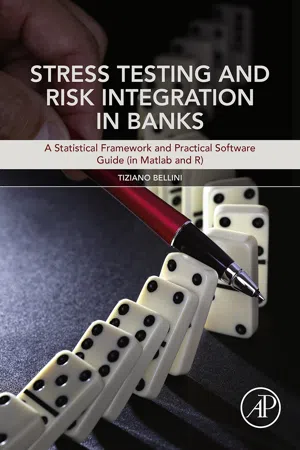
Stress Testing and Risk Integration in Banks
A Statistical Framework and Practical Software Guide (in Matlab and R)
Tiziano Bellini
- 316 pagine
- English
- ePUB (disponibile sull'app)
- Disponibile su iOS e Android
Stress Testing and Risk Integration in Banks
A Statistical Framework and Practical Software Guide (in Matlab and R)
Tiziano Bellini
Informazioni sul libro
Stress Testing and Risk Integration in Banks provides a comprehensive view of the risk management activity by means of the stress testing process. An introduction to multivariate time series modeling paves the way to scenario analysis in order to assess a bank resilience against adverse macroeconomic conditions. Assets and liabilities are jointly studied to highlight the key issues that a risk manager needs to face. A multi-national bank prototype is used all over the book for diving into market, credit, and operational stress testing.
Interest rate, liquidity and other major risks are also studied together with the former to outline how to implement a fully integrated risk management toolkit. Examples, business cases, and exercises worked in Matlab and R facilitate readers to develop their own models and methodologies.
- Provides a rigorous statistical framework for modeling stress test in line with U.S. Federal Reserve FRB CCAR (Comprehensive Capital Analysis Review), U.K. PRA (Prudential Regulatory Authority), EBA (European Baning Authorithy) and comply with Basel Accord requirements
- Follows an integrated bottom-up approach central in the most advanced risk modelling practice
- Provides numerous sample codes in Matlab and R